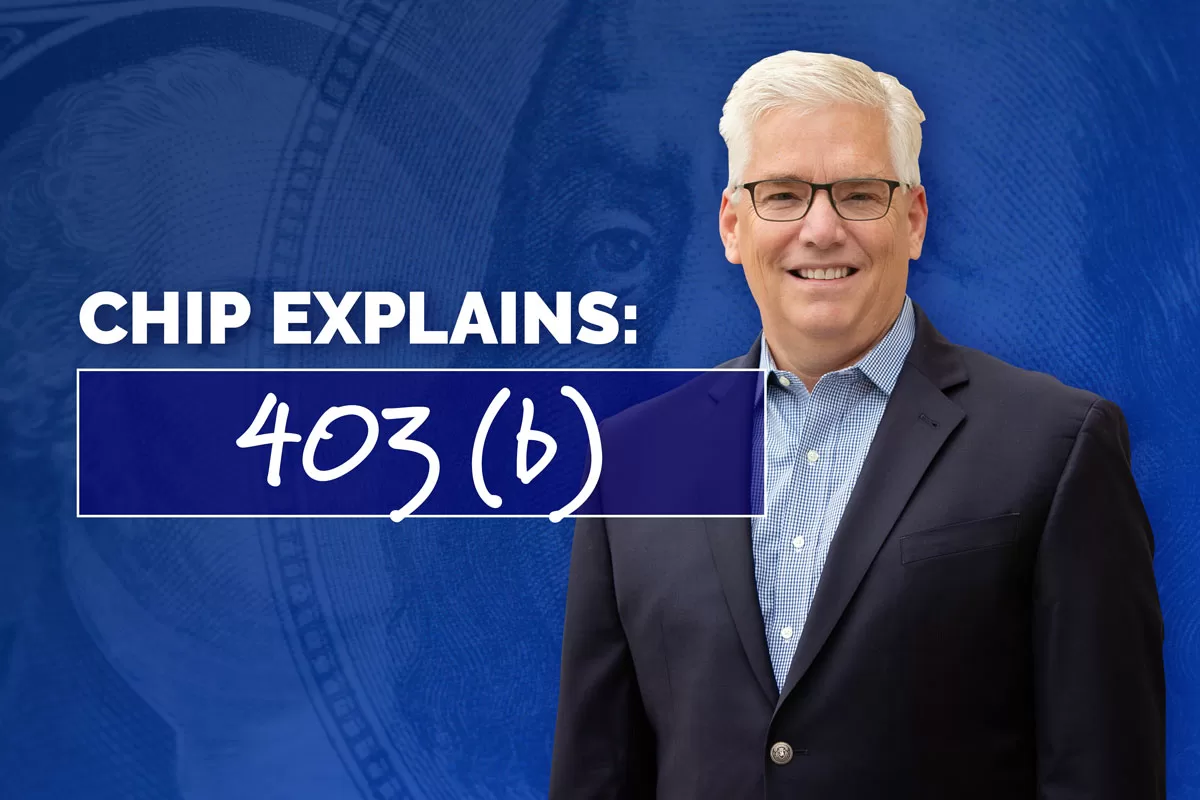Greetings, financial enthusiasts! Today, we’re exploring the world of “403(b) Retirement Plans,” a unique savings vehicle designed to help educators and certain non-profit employees secure their financial future. Think of a 403(b) as a key to a treasure chest, offering tax advantages and a pathway to financial security during your retirement years. Let’s unravel the mysteries of the 403(b) retirement plan and explore why it’s a valuable tool for those in the education and non-profit sectors.
Table of Contents
403(b) Retirement Plan: A Tailored Approach to Retirement Savings
Imagine the 403(b) retirement plan as a personalized financial blueprint, crafted to suit the needs of educators and employees of certain non-profit organizations. It’s like having a dedicated savings account that grows tax-deferred, paving the way for a comfortable retirement.
What is a 403(b) Retirement Plan?
A 403(b) retirement plan, also known as a tax-sheltered annuity (TSA) plan, is a tax-advantaged retirement savings plan available to employees of certain tax-exempt organizations, primarily public schools and non-profit entities. Similar to a 401(k) plan in structure, a 403(b) allows employees to make pre-tax contributions to their retirement savings.
How are 403(b) plans different from 401(k) plans?
-
Eligibility:
- 401(k): Offered by for-profit companies.
- 403(b): Offered by non-profit organizations, public schools, and certain government employers.
-
Investment Options:
- 401(k): Generally offers a wider variety of investment choices, including mutual funds, stocks, bonds, and ETFs.
- 403(b): May have a more limited selection, typically focused on mutual funds and annuities.
-
Loan Availability (potential difference): Typically 401(k) plans allow loans, but some 403(b) plans might not offer this feature.
-
Contribution Options (potential difference): Employer match might be less common or structured differently in 403(b) plans compared to 401(k)s.
-
Administration: 401(k) plans tend to have a more standardized administration process, while 403(b) plans can vary depending on the provider chosen by the non-profit or government entity.
Key Components of a 403(b) Retirement Plan
- Employee Contributions: Participants can make contributions to their 403(b) accounts on a pre-tax basis, reducing their taxable income for the year.
- Employer Contributions: Some employers may offer matching contributions, contributing a percentage of the employee’s salary to the 403(b) account.
- Tax-Deferred Growth: Investments within the 403(b) plan grow tax-deferred, meaning participants don’t pay taxes on earnings until they make withdrawals during retirement.
- Withdrawals and Distributions: Withdrawals from a 403(b) plan are generally taxed as ordinary income. Early withdrawals before age 59½ may incur a 10% penalty, with some exceptions.
Types of 403(b) Plans
When it comes to planning for retirement, 403(b) plans have become a popular choice among employees in the non-profit sector and certain public educational institutions. These plans offer tax advantages, helping individuals secure a financially sound future.
Traditional 403(b)
The traditional 403(b) plan is a classic choice for many employees. Participants contribute to their retirement savings on a pre-tax basis, effectively reducing their taxable income for the year. This upfront tax advantage is a key draw for those seeking immediate relief on their tax bills. However, it’s important to note that withdrawals during retirement from a traditional 403(b) plan are subject to ordinary income tax. This makes it a prudent option for those expecting to be in a lower tax bracket during retirement.
Roth 403(b)
On the flip side, the Roth 403(b) plan offers a different tax strategy. Participants make after-tax contributions, meaning their contributions are not tax-deductible in the present. However, the real magic happens during retirement. Qualified withdrawals, including earnings, are entirely tax-free. This can be particularly advantageous for individuals anticipating a higher tax bracket in retirement or those who value the simplicity of tax-free withdrawals. The Roth 403(b) is a strategic choice for those willing to forgo immediate tax benefits in favor of a tax-free retirement income stream.
Non-Elective Employer Contributions
In addition to employee contributions, some 403(b) plans allow for non-elective employer contributions. This means that, regardless of whether an employee contributes to their plan, certain employers may contribute a fixed percentage of the employee’s salary to the 403(b) plan. This employer-sponsored benefit provides an extra layer of financial security for employees, as it supplements their retirement savings even if they are unable to contribute themselves. It’s a valuable perk that can significantly boost overall retirement readiness.
Choosing the right 403(b) plan depends on individual financial goals, tax strategies, and employer offerings. Understanding the nuances of each plan type – traditional, Roth, and those with non-elective employer contributions – empowers employees to make informed decisions that align with their unique circumstances. As you navigate the landscape of 403(b) plans, consider consulting with a financial advisor to ensure your retirement strategy is tailored to your specific needs.
Why 403(b) Plans Matter
- Tax Advantages: Contributions to a 403(b) plan are made on a pre-tax basis, meaning they are deducted from your salary before taxes are withheld. This reduces your taxable income for the year, potentially lowering your overall tax bill. Additionally, earnings on investments within the 403(b) plan grow tax-deferred until withdrawn during retirement, allowing your savings to compound over time.
- Employer Contributions: Many employers offer matching contributions to 403(b) plans, meaning they will match a portion of the employee’s contributions up to a certain percentage of their salary. Employer matching contributions provide an immediate boost to retirement savings and can significantly enhance the growth of your account over time.
- Variety of Investment Options: 403(b) plans typically offer a diverse selection of investment options, including mutual funds, annuities, and other investment vehicles. This variety allows participants to tailor their investment strategy to their individual risk tolerance, time horizon, and financial goals.
- Catch-Up Contributions: Individuals aged 50 and older are eligible to make additional catch-up contributions to their 403(b) accounts beyond the standard contribution limits. Catch-up contributions allow older workers to accelerate their retirement savings and make up for any shortfall in savings during their earlier years.
- Flexible Withdrawal Options: During retirement, participants have flexibility in choosing when and how to take withdrawals from their 403(b) accounts. They can elect to receive periodic payments, a lump sum, or a combination of both, depending on their income needs and tax considerations. This flexibility allows retirees to tailor their withdrawal strategy to their specific financial situation and retirement goals.
Considerations and Limitations
Early Withdrawal Penalties
One of the critical aspects to bear in mind when managing a 403(b) plan is the potential for early withdrawal penalties. Withdrawing funds before reaching the age of 59½ may trigger a 10% penalty on top of regular income taxes. This penalty is in place to discourage premature withdrawals and encourage long-term savings. It’s essential for participants to weigh the urgency of their financial needs against the potential consequences of early withdrawals, considering alternative financial resources to avoid unnecessary penalties.
Required Minimum Distributions (RMDs)
Similar to other retirement plans, 403(b) participants are subject to Required Minimum Distributions (RMDs) starting at the age of 72. RMDs ensure that individuals begin withdrawing a minimum amount from their retirement accounts to avoid tax penalties. While this requirement is intended to facilitate the distribution of retirement savings over time, it’s essential for participants to plan for these distributions and consider the impact on their overall financial strategy.
Limited Investment Choices
It’s worth noting that some 403(b) plans may have a more restricted selection of investment options compared to other retirement plans. While these plans typically offer a range of investment choices, participants may find that their options are limited compared to what is available in other retirement vehicles. Understanding the investment choices within your specific 403(b) plan is crucial for optimizing your portfolio and aligning it with your risk tolerance and financial goals.
Employer Eligibility
Not all non-profit organizations or educational institutions offer 403(b) plans, making employer eligibility a significant factor. Before assuming the availability of a 403(b) plan, it’s essential to check with your employer and understand the retirement benefits they provide. If your employer does not offer a 403(b) plan, you may need to explore alternative retirement savings options, such as individual retirement accounts (IRAs) or other employer-sponsored plans.
How to Enroll in a 403(b) Plan
- Check Employer Eligibility: Verify if your employer offers a 403(b) plan and determine your eligibility to participate. Some employers, such as certain educational institutions, non-profit organizations, and government entities, offer 403(b) plans as retirement savings options for employees.
- Choose Contribution Type: Decide whether you want to make pre-tax contributions to a traditional 403(b) account or after-tax contributions to a Roth 403(b) account. Consider your current tax situation, future tax projections, and retirement goals when choosing between these contribution types.
- Select Investment Options: Review the investment options available within the 403(b) plan. These options may include mutual funds, annuities, and other investment vehicles. Consider factors such as risk tolerance, investment objectives, and diversification when selecting your investment options.
- Determine Contribution Amount: Determine how much you want to contribute to your 403(b) account. Take advantage of any employer matching contributions offered, as these can significantly boost your retirement savings. Consider contributing at least enough to maximize the employer match, if available.
- Complete Enrollment Forms: Fill out the necessary enrollment forms provided by your employer to initiate contributions to the 403(b) plan. These forms may require information such as your personal details, contribution amount, contribution type (pre-tax or Roth), and investment selections. Be sure to review the enrollment materials carefully and submit the completed forms according to your employer’s instructions. Once enrolled, contributions will typically be deducted automatically from your paycheck and deposited into your 403(b) account.
In Conclusion
The 403(b) retirement plan is your tailored pathway to financial security, offering tax advantages and employer contributions to educators and certain non-profit employees. By understanding the key components, benefits, and considerations of a 403(b) plan, you can embark on a journey toward a well-funded retirement. So, may your contributions grow steadily, your employer match be generous, and your retirement years be filled with the rewards of careful financial planning. Happy saving!


